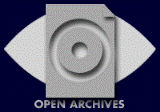Perancangan Sistem Tiltrotor pada UAV Sebagai Media Pantau Pasca Bencana
 ), Yasdinul Huda(2),
), Yasdinul Huda(2), (1) Universitas Negeri Padang
(2) Universitas Negeri Padang
 Corresponding Author
Corresponding Author
DOI : https://doi.org/10.24036/voteteknika.v10i3.118797
Full Text:
 Language : id
Language : id
Abstract
Unmanned Aerial Vehicle (UAV) dengan sistem Tiltrotor sangat efektif digunakan di daerah terdampak bencana, hal ini dikarenakan pada daerah terdampak bencana akan sulit untuk ditemukan sebuah landasan pacu yang digunakan oleh UAV untuk take off dan landing. Perancangan ini menggunakan tahap define dan design pada model 4D baik perangkat keras maupun perangkat lunak. Penggunaan UAV bersayap yang dapat melakukan take off secara vertikal akan sangat membantu dalam proses memantau kondisi pasca bencana. Penggunaan sistem tiltrotor pada UAV dapat diterapkan sebagai pilihan untuk pembuatan sebuah UAV. Berdasarkan data yang disajikan dalam penelitian bahwa adanya sayap pada mode tricopter tidak mengganggu kestabilan UAV dalam melakukan hovering, sehingga bisa dikombinasikan UAV tricopter dengan UAV bersayap. Berdasarkan hasil penelitian, diketahui bahwa UAV mampu terbang dengan kecepatan 18 M/s atau 64 KM/h, oleh karena itu UAV hanya membutuhkan waktu sekitar 18 menit 45 detik untuk mencapai jarak 20 KM. Estimasi lama terbang UAV adalah sekitar 20 menit dengan sisa kapasitas baterai digunakan untuk melakukan pendaratan sehingga diperkirakan UAV mampu melakukan penerbangan sejauh 20 KM.
Kata Kunci: Unmanned Aerial Vehicle (UAV), Sistem, Tiltrotor, Bencana
Unmanned Aerial Vehicles with a Tiltrotor system are very effective in use in disaster-affected areas, this is because in disaster-affected areas it will be difficult to find a runway used by UAVs for take off and landing. This design uses the define and design stages on 4D models both hardware and software. The use of winged UAVs that can take off vertically will be very helpful in the process of monitoring post-disaster conditions. The use of a tiltrotor system on a UAV can be applied as an option for the manufacture of a UAV. Based on the data presented in the study, the presence of wings in tricopter mode does not interfere with the stability of the UAV in hovering, so it can be combined with a tricopter UAV with a winged UAV. Based on the research, it is known that the UAV is capable of flying at a speed of 18 M/s or 64 KM/h, therefore the UAV only takes about 18 minutes 45 seconds to reach a distance of 20 KM. The estimated flight time of the UAV is about 20 minutes with the remaining battery capacity being used to make a landing, so it is estimated that the UAV is capable of flying as far as 20 KM.
Keywords: Unmanned Aerial Vehicle (UAV), System, Tiltrotor, Disaster
References
Octory,O. 2015. Foto Udara dengan Menggunakan jenis Fixed Wing. Journal of Geodesy and Geometris.
ArduPilot Dev. Team. 2021. Pixhawk Overview. Diakses pada 7 September 2021, dari https://ardupilot.org/copter/docs/common-pixhawk-overview.html
Fahmi Mukti, T. 2018. Autonomous Tricopter: Kaji Analisis Pengaruh Nilai Proportional Integral Devirative Terhadap Kestabilan Terbang. (Tugas Akhir, Politeknik Negeri Bandung, 2015) Diakses dari http://digilib.polban.ac.id/download.php?id=27390
Srivastava, P., Ninawe, T., Puthran, C., & Nirgude, V. 2018. Quadcopter for Rescue Missions and Surveillance. IOSR Journal of Computer Engineering
Eprilia MR, Rachma. 2021. Prototype Antena Tracking Telemetri Frekuensi 433 MHz Berbasis koordinat GPS (Global Positioning System). Teknik Elektro Universitas Muhammadiyah Surakarta
R, Darmawan. 2013. Rancang Bangun Prototype Unmanned Aerial Vehicle (UAV) dengan Tiga Rotor. Jurnal Teknik Pomits, 2(1), 47-52
FeiyuTech. 2012. Mini 3D Pro 3-Axis Brushless Gimbal. Diakses pada 7 September 2021, dari https://www.feiyu-tech.com/mini-3d-pro
Chen, Chao dkk. 2016. Control and flight test of a tilt-rotor unmanned aerial vehicle. International Journal of Advanced Robotic System, 1, 2-11
 Article Metrics
Article Metrics
 Abstract Views : 318 times
Abstract Views : 318 times
 PDF (Bahasa Indonesia) Downloaded : 80 times
PDF (Bahasa Indonesia) Downloaded : 80 times
Refbacks
- There are currently no refbacks.

This work is licensed under a Creative Commons Attribution-ShareAlike 4.0 International License.



.png)


.jpg)




